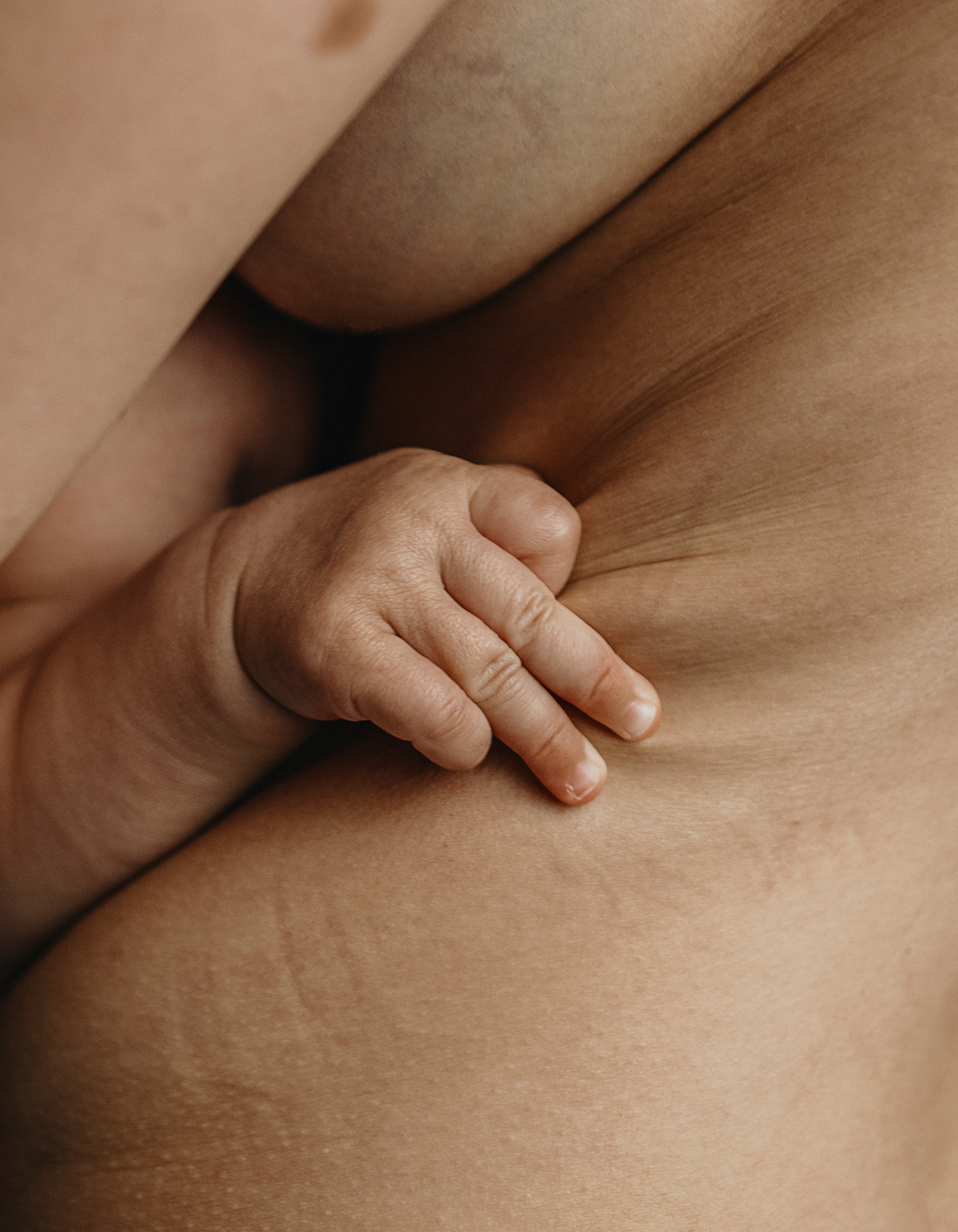Maybe it is just me, but I cannot not think of the Madonna song “express yourself” when anyone talks about hand expression! Hand expression is the number one thing I teach the mamas I meet. Not only is it smart to familiarize yourself with your breasts, but once you get the technique down, It can be extremely helpful for many reasons throughout your entire breastfeeding or pumping journey. From the beginning when your milk is coming in, all the way to the end when you wean, and everything in between.
The bottom line is…to make more milk, you must remove more milk! In this article, I will teach you exactly how to do this.
So, what exactly is Hand Expression??
Hand Expression is the technique of using your hands to manually express milk from your breasts. It can be done in addition to breastfeeding or pumping, or on its own. Hand Expression is an extremely useful skill for any breastfeeding mother! Learning this skill gives mothers more control over their comfort and their ability to provide milk for their baby. First, I’m gonna break down the technique, because it can be a bit tricky at the beginning. . Then we will talk about when and how you will use this powerful natural tool as a breastfeeding or pumping mama.
Express yourself, let’s do it!
Here’s how:
- Before expressing, you can get in the shower or use a warm moist compress to help get milk flowing. The shower is a great place in general for hand expression!
- Massage and become comfortable with your breasts
- Make a C-shape with your hand, like you are holding a cup
- Place your C-shaped hand around the base of the areola
- Now, COMPRESS back to the chest, PRESS in and RELAX
- Keep trying until you find the sweet spot and get a little droplet of colostrum out
- Go back and forth about 10 times each, for a few minutes at a time
PRESS, COMPRESS, RELAX
Now let’s talk about the benefits of Hand Expression!
1. Prenatal Hand Expression
This is something you can start at 36/37 weeks with healthy, low risk pregnancies. Check with your health care provider to make sure you are okay to begin.
Did you know our bodies start producing colostrum around 16 weeks of pregnancy?? I often find that when I am meeting with women prenatally, they are shocked when I hand express droplets out of their breasts (again, I only do this after 36 weeks). Totally normal! I remember being slightly weirded out when I saw the crust on my nipples for the first time and found out it was colostrum. It is also completely normal if you do not get much colostrum out during pregnancy; everyone is different, and after your baby is born, the volume should increase naturally.
One of the most important things I teach mothers prenatally is how to prevent a “low milk supply”. This is because the key to successful breastfeeding is making plenty of milk. You can prevent a low supply by using hand expression to remove colostrum in those early and important hours after delivery. I find it to be very helpful for mothers to get familiar with the technique before delivery.
2. Colostrum Harvesting
Prenatal colostrum harvesting is when the mother uses hand expression to collect colostrum from the breast during pregnancy (starting at 36 weeks) and freezes it for use after birth. The frozen colostrum is taken to the hospital and stored until it is required, where it can be defrosted and fed to the baby. For step-by-step instructions on harvesting your colostrum and its benefits, check out this blog post. This is especially helpful for families who are expecting multiples, mothers with a low milk supply in the past, scheduled C-sections, and mothers who have Gestational Diabetes (see DAME study).
Please keep in mind, it is very common to get little to no colostrum out during pregnancy. So don’t worry if you do not have enough to collect! The most important thing is that you get familiar with the technique of hand expression, as it can be a very valuable tool after delivery, which brings me to my next topic…
3. Hand Expression in the Early Hours after Delivery
The key to successful breastfeeding is making plenty of milk! It is in the hours after delivery that your body is getting programmed to make more milk. So the more colostrum you can remove, the more milk you will make in the long term. The most important thing you can do to make more milk sooner is to remove colostrum from the breast early, frequently and effectively. Even the first hour is important. Begin removing milk in that first hour after delivery and then every 2-3 hours after that. So, even If your baby doesn’t latch on perfectly – and many babies don’t – you can easily hand express. Hand expressing colostrum after delivery and feeding it to your baby in a spoon or a Colostrum Collector, can help prevent excessive weight loss and jaundice.
The bottom line is…you want to know how to remove milk early, frequently and effectively, even if your baby doesn’t breastfeed perfectly in the first hour. That is why it is good to develop hand expression skills before delivery.
Dr. Jane Morton (who I am lucky to call my Mother-in-law) created the website First Droplets, which provides wonderful short videos explaining the advantages of learning hand expression and using it in the early hours after delivery.
4. Engorgement
Hand expression is a simple, comforting way to relieve engorged breasts and make your breastfeeding journey more enjoyable. It is especially helpful in those early days when your milk increases in volume, and your supply is still normalizing as your body adjusts to your baby’s needs. Most women find that about 2-5 days after birth their colostrum transitions into mature milk. This usually looks like a significant increase in volume and changes in composition.
5. Hand Express to Soften the Breast and help Baby to Latch Better
If your breasts feel engorged, you may find it tricky for your baby to latch. It can sometimes seem like they are trying to get their mouth around a watermelon! Hand expression will help you soften the swollen or engorged area around the areola. Express just enough to soften the area where their mouth will latch onto the breast.
6. Increase Your Milk Supply
The bottom line is…to Make more milk, you must remove more milk!
Your hands can help you remove extra milk that the pump or baby won’t always get. Our new video called “how to boost your Milk Supply’ shows exactly how to increase your supply by using your hands!
As you will see in our video, it is a combination of hand expression, hands-on pumping and keeping close contact with your baby. If you notice a dip in your supply, you can dedicate a week to hand expressing between feeding or pump sessions. We recommend to briefly hand express 6 times a day. This will increase the amount of milk you get out, signaling to your body to make more!
7. Hands-on Pumping
Instead of relying alone on pump suction itself, it can help to also massage while pumping!
One study by Dr. Jane Morton found that mothers who used hands-on pumping got 40% more milk out.
Hands-on Pumping is a technique where you use your hands to massage and help pump milk from your breasts. It can be done in addition to breastfeeding or pumping, or on its own.
- Gently massage before you put your pump on, you can also apply a warm compress (this will get milk flowing)
- Use pumping bra so you can pump both breasts at a time
- You will find your sweet spots as you go
- Back and forth from each breast, several times
- When milk stops spraying, remove pump and hand express
- Hand expression after pumping can remove even more of that rich fatty milk that comes at the end…which sends a super powerful signal to your breasts to produce more milk
8. Hand Express Even After Pumping
Many mothers are surprised to see they can also hand express more out after they pump. This is because your hands are capable of getting more than the pump! The milk at the end, which is called the hind milk, can be too thick and creamy for a pump to remove. Getting this fatty, rich milk out at the end sends a strong signal to your body to…you guessed it…make more milk!
9. Weaning
By this point, women are usually a pro at hand expression! So to close the shop down, I suggest gradually cutting back milk expression. Start by moving one feeding or pump session out at a time, and adjusting the spacing accordingly. Wait a few days until your breasts feel okay and are not in pain, and then cut out another one. As your body adjusts to making less milk, using hand expression to comfort will help a ton!
Now you can see why I feel so strongly about learning hand expression while you are breastfeeding – from day one, and even before that. It is such a convenient tool to help smooth over so many transitions throughout your breastfeeding journey – so I hope these tips help you!
Shelly Jacobs is an Internationally Board-Certified Lactation Consultant, and the co-founder of The Lolo Baby, a breastfeeding sling designed to give mamas breastfeeding freedom in the 4th trimester. She is also part of the First Droplets team – an educational website created by her mother-in-law, Dr. Jane Morton, an internationally recognized expert in the field of human lactation. Her passion for helping new moms sparked after she experienced complications with breastfeeding her first child, and was taught about the practical methods and simple techniques taught by Dr. Jane. They began to collaborate, creating pathways for expectant and new mothers to protect their own breastfeeding experience and reduce the risk of complications, by focusing attention on the first hours after birth.




